Visiting France and returning by ship to New York City, 1936
Boat on the ocean. People sitting on deck chairs, playing a game on the deck, children are playing on the deck and couples are strolling on the deck. (1:26) Sea plane lands on the water. A small boat goes out to meet the sea plane. The plane is lifted onto the boat, then the small boat is being lifted onto the large boat. (2:49) A man and a woman at a train station with a sign in the background says “Herbesthal”. Another sign says “Koln Herbesthal Liege Namur, Charlepol Paris”. Taking train from Herbesthal Train station, near German border, to Paris. Man and woman lean out of a train window. (3:10) Posing by a statue of a lion, film pans around to the fountain and gardens. Sightseeing at Palace of Versailles. Several people walk up a big flight of steps, walk through a park, then ride in a carriage. (5:06-5:34) Film is damaged. Eiffel Tower and a little cart pulled by a goat. Arc de Triomphe and Notre Dame Cathedral. Woman holding a dachshund on a boat. Shipboard, Köln, NY. On the boat, couple smiling at the camera, sitting on deck chairs. Boat arriving in New York City, New York, and scenes of skyline, and the Statue of Liberty and several large ocean liners and tug boats. David Pablo Boder was a professor of psychology at the Illinois Institute of Technology who traveled in 1946 to Europe to record interviews with displaced persons. Arriving in Paris in late July, Boder would spend the next two months interviewing 130 displaced persons in nine languages and recording them on a state-of-the-art wire recorder. The interviews were among the earliest (if not the earliest) audio recordings of Holocaust survivors. They are valuable not only for the testimonies of survivors and other DPs, but also for the song sessions and religious services that Boder recorded at various points during the expedition. Boder's itinerary included four countries—France, Switzerland, Italy, and German—and sixteen different interview sites. On most days he conducted between two and five interviews, with each interview lasting anywhere from 20 minutes to several hours. As the weeks went by and Boder sensed his time drawing short, he stepped up the pace. Toward the end, he completed as many as nine in a single day (on September 21 in Munich). Most days total half that number; some days are unaccounted for. Boder left Europe in early October, having recorded over ninety hours of material and completely used up the two hundred spools of wire that he had brought with him. A very detailed biography is published at http://voices.iit.edu/david_boder and in Alan Rosen's The Wonder of Their Voices: The 1946 Holocaust Interviews of David Boder, New York: Oxford University Press, 2010.
- EHRI
- Archief
- us-005578-irn724937
- New York, NY, United States
- Film
Bij bronnen vindt u soms teksten met termen die we tegenwoordig niet meer zouden gebruiken, omdat ze als kwetsend of uitsluitend worden ervaren.Lees meer










